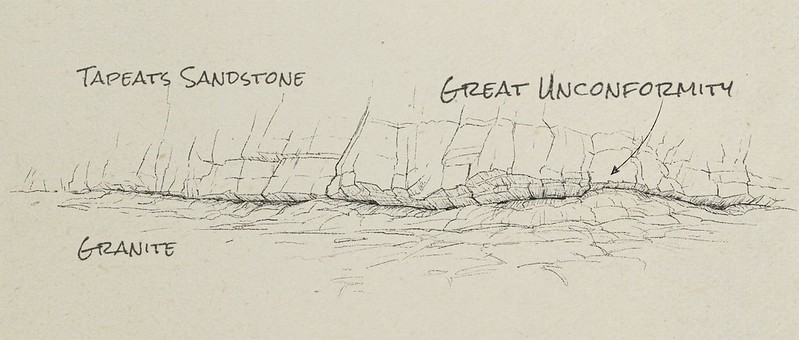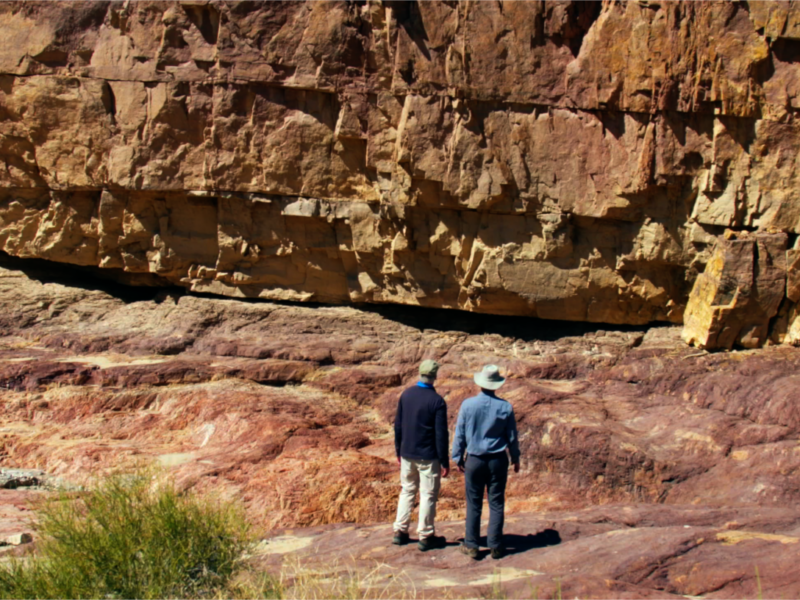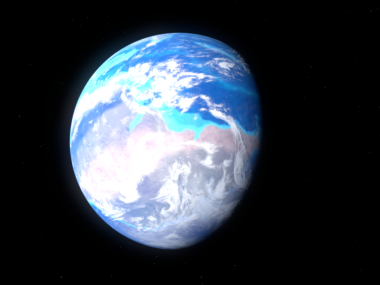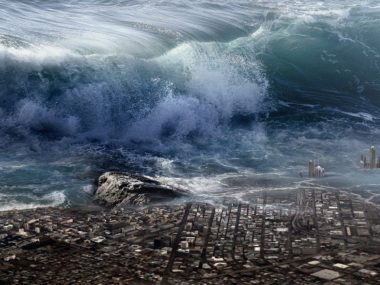Today, we access most movies and TV shows via a streaming service. But it wasn’t always like this. Back when I was growing up we would buy VHS tapes and DVDs. When I wanted to watch a movie I didn’t own, I would rent it from Netflix or my local library. I still remember the dismay I felt when I popped the DVD in and started watching, only for the movie to stop in the middle of an action scene! This was usually because a previous renter scratched or cracked the disk. I would have to send the DVD back and pick up another copy.
The views expressed in this article reflect those of the author mentioned, and not necessarily those of New Creation.
What is the Great Unconformity?
Geologists have a similar problem; they study the geologic record to better understand the saga that is our planet’s history, but there are many places where entire segments of the geologic record are missing!
How do we know they’re missing in the first place? The rocks underneath a meeting point are different from the ones above. Because we know the rock layers did not naturally meet this way, we call this meeting point an unconformity. One of the best examples of these meeting points, or contact surfaces, is the Great Unconformity.
American geologist John Powell was the first to identify the Great Unconformity in 1869.1 He was in the Grand Canyon where this meeting point separates Precambrian granite below from the lowermost layers of the Tapeats Sandstone above. And the Grand Canyon is not the only place we find the Great Unconformity. Geologists have identified it on every continent (with the possible exception of Africa).2 One geologist described its formation in this way:
“Ancient mountain systems were worn down to their roots reducing the continents more nearly to a plain than they have ever been before or since.”
– Edward W. Olson3
As you can see in the illustration below, the rock unit below the meeting point is composed of primarily igneous and metamorphic rock. Above the meeting point is composed of marine-deposited sandstone layers. These rock units are unconformable because they are not the same. In the case of the Great Unconformity specifically, the rock that once rested between these two layers we see today eroded away at some point. Geologists have estimated the lost sediment was between one and three miles thick! How or when is one of the great geological questions.

What Created the Great Unconformity?
The Great Unconformity is of great interest to young-earth geologists. Some theorize it formed through the creation processes God might have used during Creation Week when He formed the Earth.4 Most, however, believe the evidence was left behind by the beginning of Noah’s Flood. According to this view, at least 40 days of torrential downpours or the rapid incoming of the sea (or a combination of both!) sent cascades of floodwaters sweeping across what was formerly dry land.5,6 Not only does this hypothesis explain the geological evidence, but it is also consistent with the teachings of Scripture. Humans, land-living animals (except those on the Ark), and even the dry land surface itself were swept away and destroyed (Genesis 6:13 and Matthew 24:39).
If, as most young-earth geologists believe, the Great Unconformity is the product of the oncoming Flood, it serves as a vivid and humbling reminder of the seriousness of human sin and the power, wrath, and holiness of our Lord and Creator.
Learn More About the Great Unconformity!
Footnotes
- Merten, G (2005) Geology in the American Southwest: New Processes, New Theories In MF Anderson, ed., A Gathering of Grand Canyon Historians. Proceedings of the Inaugural Grand Canyon History Symposium, January 2002. Grand Canyon Association, Grand Canyon, Arizona. ↩︎
- McDannell, K., et al. 2022. “Thermochronologic constraints on the origin of the Great Unconformity.” Proceedings of the National Academy of Sciences, 119 (5).
↩︎ - Olson, W. S. 1966. “Origin of the Cambrian-Precambrian unconformity.” American Scientist 54:458-64. ↩︎
- Coulson, Ken. 2021. “Using Stromatolites to Rethink the Precambrian-Cambrian Pre-Flood/Flood Boundary.” Answers Research Journal 14: 81–123. ↩︎
- Dickens, H., A. Hutchison. 2021. “The Flood Swept Away Pre-Flood Lives!” Journal of Creation Theology and Science Series C: Earth Sciences 11:1-4. ↩︎
- Dickens, H., A. Hutchison. 2021. “Geochemical and related evidence for early Noah’s Flood year.” Journal of Creation 35:1. ↩︎












Amen. its not a unconformity but only the presumptions don’t confirm to the truth. Its simplt showing a upheaval in the early days of the flood, including massive volcanic or otherwise burning/melting of rock, then a few weeks later depositions of the sediment of the sea thrown on top, squeezed, and later still other stuff. maybe happening in daus.
it shows the breakup of the single continent and then wave power depositing withy fantastic force sediment on top. Exactly as it looks without the absurd slow ideas of non creation geology.